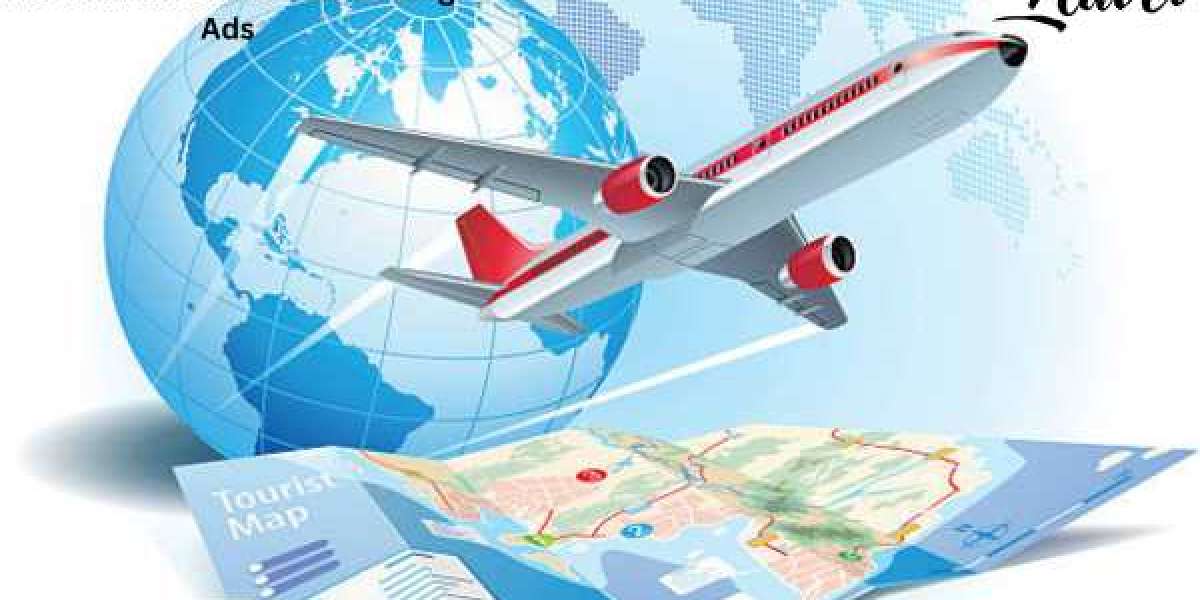In today's digital age, travel has become more accessible than ever before. Whether you're planning a weekend getaway or a once-in-a-lifetime adventure, there's no shortage of travel options to choose from. However, with so many choices, how can travelers make informed decisions about their destinations, accommodations, and activities? The answer lies in the world of travel advertising.
Travel ads have evolved significantly over the years, adapting to the changing landscape of technology and consumer behavior. In this ultimate guide to traveling ads, we'll explore the various aspects of travel advertising, including its history, types, strategies, and their impact on the travel industry.
7Search is an online advertising network founded in 1999, making it one of the pioneers in the PPC advertising space. It gained attention for providing a platform that allowed advertisers to bid on specific keywords and display their ads across a network of partner websites.
A Brief History of Travel Advertising
Travel advertising has a rich history dating back to the early 20th century when print media dominated the advertising landscape. Travel agencies and tourism boards relied on posters, brochures, and newspaper ads to entice potential travelers. These vintage travel ads often featured captivating illustrations and enticing slogans, painting idyllic pictures of far-off destinations.
As technology advanced, travel advertising made its way to radio and television, providing more dynamic and immersive experiences. But it wasn't until the digital age that travel advertising truly transformed. The Internet and social media platforms opened up new opportunities for advertisers to reach a global audience instantly. With the advent of online travel agencies and booking platforms, the travel industry witnessed a digital revolution.
Types of Travel Ads
Travel advertising comes in various forms, each catering to different stages of the traveler's journey. Here are some common types of travel ads:
Display Ads
Display ads are visual advertisements that appear on websites, often in the form of banners or sidebars. These ads can showcase destinations, hotels, or travel packages, enticing users to click through to learn more.
Search Engine Marketing (SEM) Ads
SEM ads, like those on Google or Bing, appear when users search for specific travel-related keywords. Advertisers bid on keywords, and their ads appear at the top of search results. This is a powerful way to capture travelers who are actively looking for information or bookings.
Social Media Ads
Social media platforms, such as Facebook and Instagram, offer targeted advertising options. Travel companies can create visually appealing ads and reach specific demographics, interests, and behaviors, making them a valuable tool for reaching potential travelers.
Video Ads
Video ads on platforms like YouTube provide an engaging way to showcase travel experiences. These ads can include destination highlights, hotel tours, and customer testimonials, offering a glimpse into what travelers can expect.
Email Marketing
Email marketing is another effective way to promote travel deals and offers. Travel companies can build email lists and send personalized messages to subscribers, enticing them with discounts, promotions, and travel inspiration.
Influencer Marketing
Collaborating with travel influencers can be a powerful way to reach a highly engaged audience. Influencers share their travel experiences, showcasing destinations and accommodations to their followers.
Strategies for Effective Travel Ads
To create impactful travel ads, advertisers need to employ the right strategies. Here are some key strategies to consider:
Storytelling
Travel is all about experiences, so use storytelling to convey the unique aspects of a destination. Share narratives, traveler testimonials, and captivating visuals that transport the viewer to the destination.
Personalization
Personalization is essential in travel advertising. Tailor your ads to the individual traveler's preferences, whether it's a family-seeking adventure or a couple looking for a romantic getaway.
Social Proof
Travelers rely heavily on reviews and recommendations. Incorporate social proof into your ads by showcasing positive reviews, ratings, and testimonials from previous travelers.
Seasonal Promotions
Take advantage of seasonality. Offer discounts and promotions during peak travel seasons or for specific events or holidays, attracting travelers seeking value.
Mobile Optimization
Travelers often use their mobile devices to research and book trips. Ensure that your ads are mobile-friendly and offer a seamless experience on smartphones and tablets.
The Impact of Travel Ads on the Industry
Travel advertising plays a significant role in shaping the travel industry. It influences the decisions of potential travelers and drives them to explore new destinations. Here's how travel ads impact the industry:
Increased Awareness
Travel ads introduce travelers to new destinations and experiences they might not have considered. Through captivating visuals and enticing descriptions, these ads create awareness and curiosity.
Competitive Market
The travel industry is highly competitive, and advertising helps travel companies stand out in the crowd. Effective ads can attract travelers away from competitors by offering unique value propositions.
Online Booking
The digital age has made online booking a standard practice. Travel ads direct users to booking platforms, making it easy for travelers to research and reserve accommodations, flights, and activities.
Revenue Generation
Travel advertising contributes significantly to the revenue of travel companies. By reaching a broader audience and increasing bookings, companies can maximize their profits.
Economic Impact
The travel industry is a substantial contributor to local and global economies. Effective advertising can boost tourism, benefitting local businesses, job markets, and government revenue.
Conclusion
In a world where traveling ad choices are abundant, travel advertising is a crucial tool for both travelers and the travel industry. It informs and inspires, helping travelers make informed decisions and discover new horizons. Simultaneously, it supports travel companies in attracting customers, boosting revenue, and stimulating economic growth.
The evolution of travel advertising has mirrored the changing landscape of technology and consumer behavior, and it continues to adapt to meet the demands of modern travelers. By employing effective strategies and utilizing various types of ads, travel companies can leverage the power of advertising to make every journey an unforgettable adventure. So, whether you're a traveler seeking your next destination or a travel company looking to inspire and capture the imaginations of others, remember that the ultimate guide to traveling ads is a story of exploration, inspiration, and connection.








